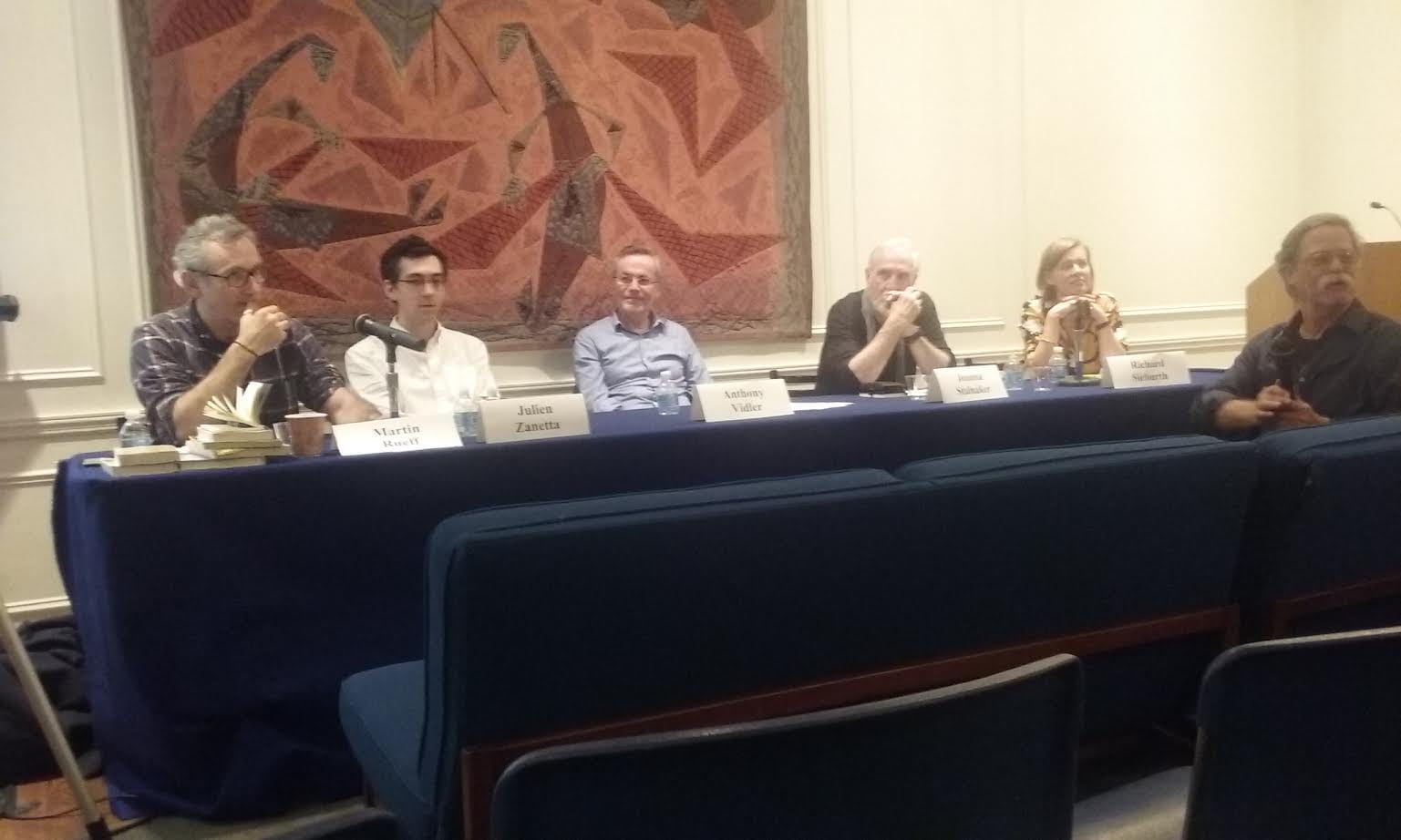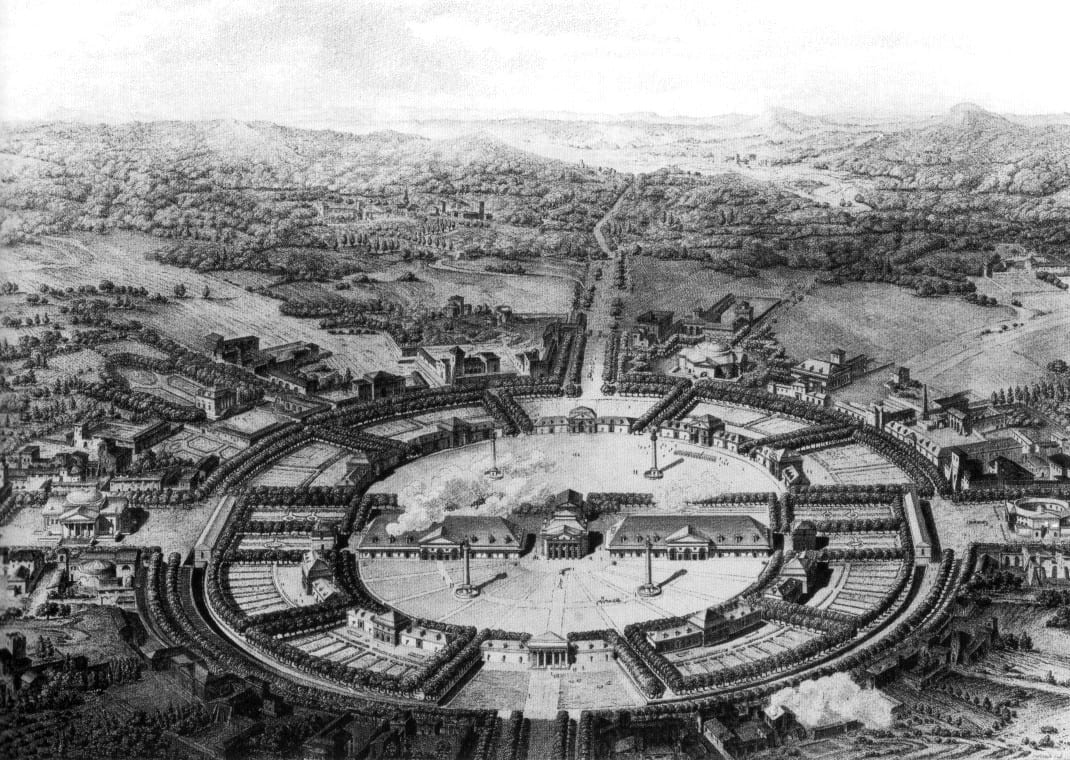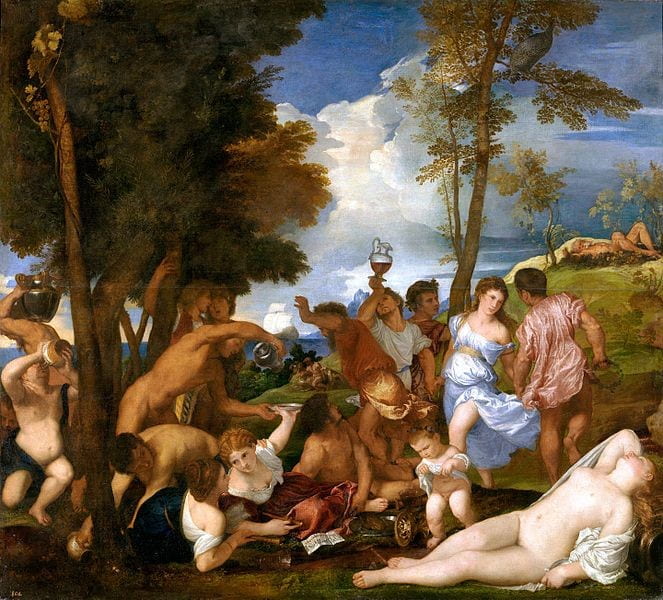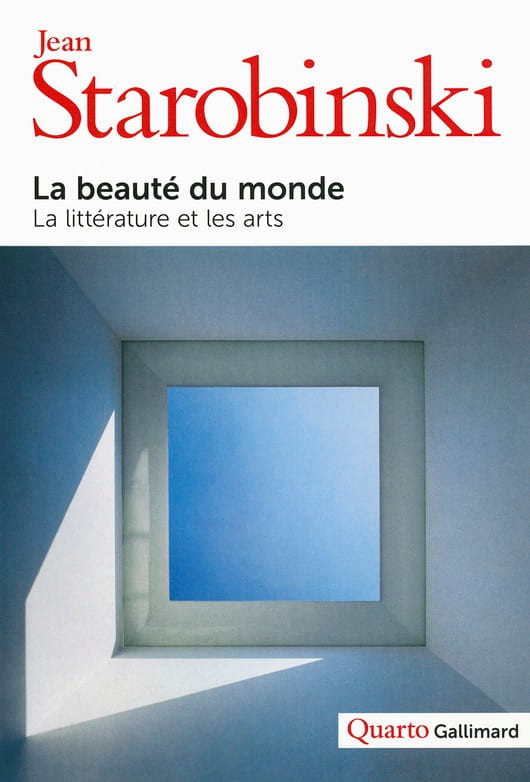by guest contributor Emelyn Lih
The work of Swiss literary critic, hermeneut, and historian of ideas Jean Starobinski can be characterized by its dedication to depth and diversity: diversity of periods explored (from Montaigne to Baudelaire to Claude Simon, to say nothing of the eighteenth century), of genres and mediums studied (from poetry to art to political philosophy to opera), of objects analyzed (from melancholy to acrobats to hermeneutics itself to the idea of liberty). Many of these strands twined together during his stint at Johns Hopkins University (1953-1956), where he engaged with such luminaries as the literary critic Georges Poulet, historian of medicine Owsei Temkin, and Arthur O. Lovejoy, founder of the Journal of the History of Ideas.
The recent conference at New York University’s Maison française devoted to Starobinski’s œuvre represented this diversity and paid tribute to the depths his myriad studies plumbed. Most immediately, the publication last year of a new collection of Starobinski’s writings La Beauté du monde (2016) under the direction of Martin Rueff (Université de Genève) prompted the day-long exploration of his work “High Fidelity: Jean Starobinski’s Critical Hermeneutics.”
Denis Hollier (NYU) introduced the first half of the program. Hollier began by commenting on the choice of Titian’s The Andrians for the conference poster, quoting Starobinski’s expressions of admiration for the painting, discovered in the summer of 1939 when the masterpieces of the Prado were evacuated from Spain and exhibited in Geneva. Hollier traced Starobinski’s treatment of the theme of the oppositions and transitions between life and matter, vitalism and mechanism, through various literary and artistic manifestations, including several representations of Pygmalion and Galatea. Here, as elsewhere, Starobinski proved acutely aware of the risk presented by art springing too readily to life. Pygmalion’s gesture was not a true encounter with the other, but a narcissistic fusion with the sculpture he has himself created. In criticism, this facility must be avoided: it is difficult to accurately present another writer “in his own words,” according to the principle of the Écrivains de toujours collection to which Starobinski contributed Montesquieu par lui-même, his first published book (1953).
Philippe Roger chose a different point of entry into the question of the appropriate distance between the critic and his or her object. How can the critic shake free of the text’s paralyzing fascination without allowing the work to lose its power of enchantment? In a careful reading of the 1974 article « Le texte et l’interprète » (reprinted in La Beauté du monde), Roger explored the complex balance of power between a text and its interpreter as theorized by Starobinski, a relationship in which distance and intimacy do not prove mutually exclusive. The duty of the critic is to consolidate the object in its autonomy and specificity, to make it (in an apparent paradox) more resistant to analysis and thus to appropriation. This close reading then widened into a consideration of the roots of the ethical considerations discernible in the origins, margins and ending of Action et réaction: vie et aventures d’un couple (1999), in which Philippe Roger finds a return to the relationship between poetry and resistance identified in Starobinski’s first published texts, which came out during the Occupation. The strange conclusion to Action and reaction, where Starobinski quotes Valéry in a way that appears to invalidate the entire book’s objective, in fact proves a way to reintroduce value and thus an ethics into the dangerous infinite regression of actions and reactions. The critical relation can thus be read as a critical reaction and an assumption of critical responsibility.
The question of the appropriate distance from and sympathy with the object of one’s study ran through the day’s presentations, and prompted many speakers to interrogate their own relationship to Starobinski. Laurent Jenny (Université de Genève) evoked Starobinski’s preface to Jenny’s book La Parole singulière. His talk explored various means suggested by Starobinski of parrying the risks represented by the absence of a metalanguage that plagues the relationship between the hermeneut and a textual object: the interpreter’s gaze must seek to be gazed back at in return (« Regarde, afin que tu sois regardé » / “Look, so that you may be looked at in return,” as Starobinski advises in L’Œil vivant), a position that Jenny linked to Merleau-Ponty and to Cassirer. The object must be apprehended as visible, not as merely a fragment of language to be commented on in language. Starobinski’s appreciation of Leo Spitzer’s stylistics stems from this drive to identify (and indeed, to introduce) layers of opacity and silence between the text and its commentary.
Lucien Nouis (NYU) also discussed Starobinski’s relationship to Spitzer, as one of a series of three critical « égarements » – wanderings, detours, wrong paths taken – that Starobinski retraced both in deep sympathy with his subjects and in the desire to construct what one might call methodological cautionary tales. The hermeneutic circle may at any point collapse into a tautological circle, by bringing the text back to the interpreter, from alterity to sameness. Spitzer, for example, despite his opposition to Georges Poulet’s critique d’identification, treats the text like a woman to be seduced (a desire itself often prompted by the presence of a critical “rival”), with a passionate and jealous attention where the man is more present than the scholar. Nouis brought out the quasi-religious high fidelity required to watch steadily over a beloved writer’s shoulder even as he (Spitzer, Saussure, Rousseau) lapses into narcissistic mirroring.

Conference participants (from left to right): Martin Rueff, Julien Zanetta, Laurent Jenny, Anthony Vidler, Joanna Stalnaker and Richard Sieburth (author’s photograph)
Richard Sieburth (NYU) introduced the second series of four presentations by describing a personal connection to Starobinski’s Geneva. The first panelist, Joanna Stalnaker (Columbia) used the motif of the bouquet and its cousin the florilegium or anthology – a bouquet of texts – to retrace Starobinski’s interpretation of the late Rousseau, beautifully punctuating her reading with other floral gifts: pages from Rousseau’s herbarium, late poems by Mallarmé, bouquets and scattered flowers as painted by the poet’s friend Manet. A bouquet is what holds things together, whether it be a bunch of flowers or the social order; in Les Rêveries du promeneur solitaire, Rousseau’s faith in the possibility of such cohesion falters, and in Stalnaker’s reading, Starobinski gives new voice to this worry, lending it ecological overtones.
Anthony Vidler (Cooper Union) ended his own talk by alluding to the rich potential for environmental analysis offered by such texts as Action and reaction; he focused, however, on Starobinski’s importance for historians and theorists of architecture as early as the 1950s and 60s. Read from a spatial perspective, La Transparence et l’obstacle helped imagine and interpret eighteenth-century French architecture, including the utopian fantasies of Revolutionary writers like Claude-Nicolas Ledoux (who elaborated a particular version of Rousseauist architecture) and Étienne-Louis Boullée. Vidler explained how this fertile cross-disciplinary reading continued with the publication and translation of L’Invention de la liberté and 1789: The Emblems of Reason, two “masterfully a-art-historical” works whose approach to symbolism, to the notion of the event, and to the translation of political and social traumas into collective aesthetic norms nonetheless provided architectural historians with precious analytical tools.

Plan of the ideal city of Chaux by Claude-Nicolas Ledoux
Since Julien Zanetta, co-organizer of the conference, had entirely lost his voice, Laurent Jenny read his paper. It focused on Starobinski’s readings of Paul Valéry: the strong affinity between the poet and the critic was evident as early as Starobinski’s undergraduate thesis on self-knowledge in Stendhal, inspired in part by Valéry’s 1927 preface to Lucien Leuwen. Zanetta compared their readings of Stendhal, in that preface and in « Stendhal pseudonyme » (the last chapter of L’Œil vivant). Where Valéry critically situates himself behind Stendhal’s gallery of masks, Starobinski faces these multiple masks, examining their different functions. Both texts contain discreet nods to Valéry’s Monsieur Teste, he who observes « à distance de loge » (literally, from the vantage point of a box at the theater), an image that serves as a powerful metaphor for a hermeneutics poised between fascination and clear-sightedness. In Zanetta’s view, Valéry’s desire to “impersonalize” himself through his valorization of text over author is in the end not so different from Stendhal’s histrionic role-playing; Starobinski sees Valéry and Stendhal as equally Protean, both masked and demasking.
The day’s last talk was given by Martin Rueff. After a detailed explanation of Louis Althusser’s concept of theoretical practice, he set about justifying the parallel he proposed between aspects of Starobinski’s and Althusser’s thought, which might at first appear surprising since Starobinski’s method – and more generally, what Rueff called the Swiss brand of French theory – is so rooted in practice and in constant, concrete confrontation with the text, and so wary of systematization and overarching structure. By identifying similarities in the two writers’ attitude toward theories in history of science and of medicine (in Starobinski’s case, especially in three articles from the early 1950s, on Speransky, Sigerist and Canguilhem), Rueff arrived at a definition of Starobinski’s method as a hermeneutical theoretical practice (« une pratique théorique herméneutique »).
The conference concluded in a lively discussion, much of it centered on Martin Rueff’s statements about Starobinski’s relationship to philosophy (that he is one of the last thinkers to refuse to give in to its prestige) and to history (that it represents, for him, the ultimate horizon of the real). Many of the presenters underlined the profound continuity of Starobinski’s thought (with Philippe Roger sketching out some of the differences between the Swiss critic and Roland Barthes), and how this continuity allowed for important convergences between the day’s presentations, despite the diversity of discipline and approach. The challenge of combining sympathy and distance, affect and rigor, adhesion and lucidity, ran through the day’s presentations, producing the sense of a renewed commitment—I am tempted to say a vow, as in taking vows—to the highest fidelity in critical practice.
My own first encounter with Starobinski was in the context of his article « La journée dans Histoire », in which he mobilizes his lasting interest in the shape, order and occupations of the day as a signifying structure to explore its expression in Simon’s beautiful and difficult novel Histoire (1967). The shape of the day or « la forme du jour », which Starobinski has explored in a multitude of instances, from antiquity to the Nouveau roman, seems apt for capturing the well-ordered, polyphonic and coherent progression of this Friday in February devoted to his work. All eight presentations had clearly been inspired by Starobinski in multiple ways: for the group of speakers coming together from Paris, Geneva and New York, this occasion served as an invitation to return to Starobinski’s own favorite objects of study; to explore the sophistication and subtlety of his reflections on literary-critical and historical method; and to be reminded of his unfaltering standards of truth, care and accuracy in the exercise of criticism.
“High Fidelity: Jean Starobinski’s Critical Hermeneutics” was held at the Maison française of NYU on Friday February 17, 2017 and was sponsored by the Center for French Civilization and Culture of NYU and the Consulate General of Switzerland in New York.
Emelyn Lih is a graduate student in French at New York University. Her master’s research at the École normale supérieure in Paris focused on literary representations of the Spanish Civil War, from Georges Bernanos to George Orwell and Claude Simon. She is preparing a dissertation on the relationship between autobiography and history in postwar French literature.






Leave a Reply